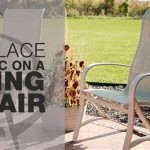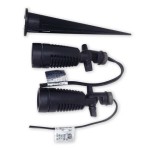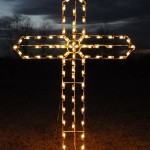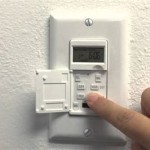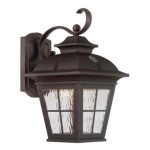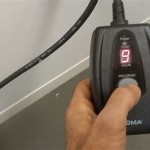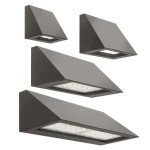What Wattage for Outdoor Soffit Lights
Soffit lighting plays a crucial role in enhancing a home's curb appeal and providing essential outdoor illumination. Selecting the right wattage for these fixtures involves careful consideration of several factors, including the desired lighting effect, the spacing between lights, and the overall aesthetic goals. This article explores the various wattage options available for outdoor soffit lighting and provides guidance for making informed decisions.
Historically, incandescent bulbs were the standard for soffit lighting. Common wattages ranged from 40 to 60 watts, offering a warm, yellowish light. However, incandescent bulbs are significantly less energy-efficient than modern alternatives and have a shorter lifespan. While some homeowners may still prefer the traditional aesthetic of incandescent light, the considerable energy savings offered by newer technologies make them less attractive.
Halogen bulbs represent an incremental improvement over incandescent bulbs. They offer a similar warm light but are slightly more energy-efficient. Halogen bulbs are available in similar wattages to incandescent options, allowing for a relatively straightforward swap in existing fixtures. However, they still generate substantial heat and consume more energy than LED or CFL alternatives.
Compact Fluorescent Lamps (CFLs) provide significantly improved energy efficiency compared to both incandescent and halogen bulbs. A CFL with a wattage of 9-13 watts can produce a similar light output to a 40-watt incandescent bulb. CFLs are available in various color temperatures, allowing homeowners to choose between warmer and cooler light tones. One potential drawback of CFLs is their sensitivity to cold temperatures, which can affect their performance in colder climates.
Light Emitting Diodes (LEDs) are currently the most energy-efficient option for soffit lighting. LEDs use considerably less electricity than any other option and have an exceptionally long lifespan. A 4-7 watt LED bulb can easily replace a 40-watt incandescent bulb, providing equivalent light output with a fraction of the energy consumption. LEDs are available in a broad range of color temperatures, allowing for precise customization of the desired lighting aesthetic. Additionally, LEDs are highly resistant to temperature fluctuations, making them a robust choice for various climates.
Choosing the appropriate wattage also involves considering the spacing between soffit lights. Closely spaced lights may require lower wattage bulbs to prevent excessive brightness. Conversely, wider spacing may necessitate higher wattage bulbs to ensure adequate illumination. A general guideline suggests spacing soffit lights approximately four to six feet apart. However, this can be adjusted based on the specific needs of the property and the desired lighting effect.
The desired lighting effect significantly influences wattage selection. For ambient lighting that gently illuminates the exterior of the home, lower wattage bulbs may suffice. For security lighting, where brighter illumination is desired, higher wattage bulbs may be necessary. Furthermore, the architectural features of the home, the surrounding landscape, and the presence of other outdoor lighting sources all contribute to the ideal wattage selection.
The light output of a bulb is measured in lumens, not watts. While wattage indicates power consumption, lumens measure the brightness of the light produced. When comparing different bulb types, focusing on lumens provides a more accurate comparison of light output. A higher lumen value indicates a brighter light, regardless of the wattage.
In addition to wattage and lumens, the color temperature of the bulb plays a significant role in the overall aesthetic. Color temperature is measured in Kelvin (K). Lower Kelvin values (2700K-3000K) produce a warm, yellowish light, similar to traditional incandescent bulbs. Higher Kelvin values (5000K-6500K) produce a cooler, bluer light. Selecting the appropriate color temperature depends on personal preference and the desired ambiance.
Before replacing existing soffit lights or installing new ones, it is advisable to consult local building codes and regulations. Some areas may have specific requirements regarding the type and wattage of outdoor lighting fixtures. Checking with local authorities ensures compliance with regulations and avoids potential issues.
Several online resources and lighting calculators can assist in determining the optimal wattage and spacing for soffit lights. These tools often consider factors such as the size of the area to be illuminated, the desired light level, and the type of bulb being used. Leveraging these resources can simplify the decision-making process and help ensure satisfactory results.

Exterior Recessed Soffit Lighting Aspectled

Soffit Lighting Installing Outdoor Recessed Lights

What Wattage Is Best For Outdoor Flood Lights Ledmyplace

Surface Mounted Soffit Light Lbl186 5w External

How Many Lumens Are Needed For Outdoor Lighting The Home Depot

Trex Rainescape 445 Lumen 4 25 Watt White Low Voltage Hardwired Led Outdoor Deck Light 3000 K In The Lights Department At Com

Soffit Lighting Installing Outdoor Recessed Lights

5 Ideas For Stylish Led Soffit Lighting Ultra Beam Ltd

Outdoor Soffit Lighting Kit Led Recessed Downlights Dekor

Outdoor Soffit Lighting Kit Led Recessed Downlights Dekor
Related Posts
